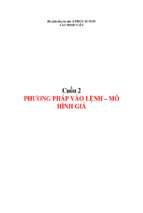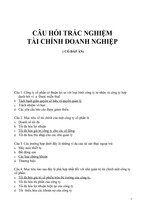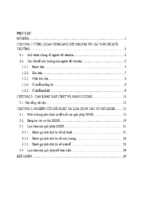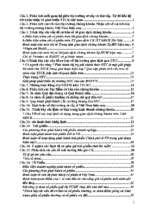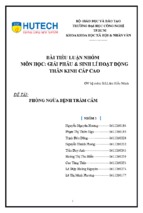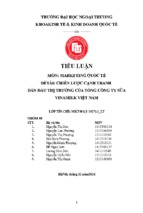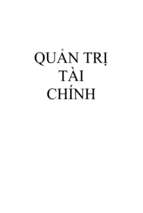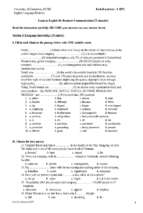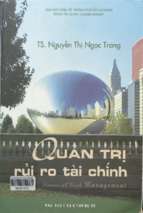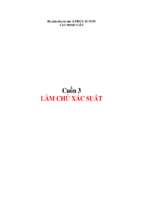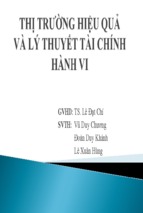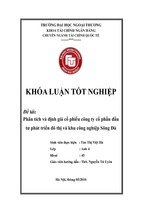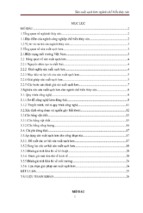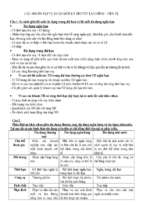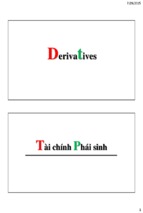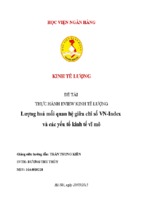See discussions, stats, and author profiles for this publication at: https://www.researchgate.net/publication/259573053
Dividend Policy Ratios and Firm Performance: a
case study of Selected Hotels & Restaurants in
Sri Lanka
ARTICLE · DECEMBER 2013
CITATION
READS
1
2,098
2 AUTHORS, INCLUDING:
Nimalathasan Balasundaram
University of Jaffna
109 PUBLICATIONS 118 CITATIONS
SEE PROFILE
All in-text references underlined in blue are linked to publications on ResearchGate,
letting you access and read them immediately.
Available from: Nimalathasan Balasundaram
Retrieved on: 29 January 2016
G.J.C.M.P.,Vol.2(6):16-22
(November-December, 2013)
ISSN: 2319 – 7285
Dividend Policy Ratios and Firm Performance: a case study of
Selected Hotels & Restaurants in Sri Lanka
Priya, Ka & Nimalathasan, Bb
a
Demonstrator, Department of Commerce, University of Jaffna.
Senior Lecturer, Dept of Accounting, University of Jaffna, Sri Lanka.
b
Abstract
Dividend policy is one of the most complex aspects in finance. The reality is that dividend policy is more
commonly an instrument of wealth distribution than it is an instrument of wealth creation. The study of firm performance
determinants is a central question for strategic management. In this study, an attempt has been made to analyze the
Dividend policy Ratios and Firm Performance during 2008 to 2012 (05 years) financial year of Selected Hotels &
Restaurants in Sri Lanka. For the purpose of this study, the data was extracted from the annual reports of sample
companies. Correlation and multiple regression analysis are used for analysis. The results revealed that dividend policy
ratios has a great impact on all firm performance ratios except return on investment (ROI) and return on equity (ROE).
Further EPS, P/E and PB are significantly correlated with ROA 5 percent level of significance. At the same time P/E is
significantly correlated with ROE at 5 percent level of significance. Finally EPS and PB are significantly correlated with
ROE at 1 percent level of significance.
Key Words: Dividend Policy; Firm Performance; and Dividend Policy Ratios
Introduction
Dividend policy can be of two types: managed and residual. In residual dividend policy the amount of dividend is
simply the cash left after the firm makes desirable investments using NPV rule. In this case the amount of dividend is
going to be highly variable and often zero. If the manager believes dividend policy is important to their investors and it
positively influences share price valuation, they will adopt managed dividend policy. The optimal dividend policy is the
one that maximizes the company’s stock price, which leads to maximization of shareholders’ wealth. Whether or not
dividend decisions can contribute to the value of firm is a debatable issue.
The issue of dividend policy is a very important one in the current business environment. Dividend policy remains
one of the most important financial policies not only from the viewpoint of the company, but also from that of the
shareholders, the consumers, employees, regulatory bodies and the Government. For a company, it is a pivotal policy
around which other financial policies rotate (Alii et al., 1993).
Dividend policy define, it’s the decision to pay out earnings versus retaining and reinvesting them. Dividend
changes may be important signals if the market anticipates that the change will be maintained through time. If the market
believes that the change is just a rearrangement of dividends through time, then the impact will be small. The reaction to
the information contained in dividend changes is called the information content effect.
This is particularly critical in the case of firm performance, one of the most relevant constructs in the field. Firm
performance is a relevant construct in strategic management research and frequently used as a dependent variable. The
concept of firm performance needs to be distinguished from the broader construct of organizational effectiveness.
Venkatraman and Ramanujan (1986) offered an enlightening figure of three overlapping concentric circles with the
largest representing organizational effectiveness. This broadest domain of organizational effectiveness includes the
medium circle representing business performance, which includes the inner circle representing financial performance.
Significance of the Study
Dividend policy is one of the significant components of firm policies and has been viewed as an interesting issue
present. Dividend payout decisions effect on the firms’ valuation. Moreover, cash dividend has a special position among
the shareholders. However, the main problem is the reasons for adopting a policy of divided payout. Dividend policies
depend on several factors. One of these factors is corporate governance (Mehrani Sasan, Moradi Mohamad & Eskandar
Hoda, 2010).
Dividend policy is the regulations and guidelines that a company uses to decide to make dividend payments to
shareholders (Nissim & Ziv, 2001). The dividend policy decisions of firms are the primary element of corporate policy.
Dividend, which is basically the benefit of shareholders in return for their risk and investment, is determined by different
factors in an organization. Basically, these factors include financing limitations, investment chances and choices, firm
size, pressure from shareholders and regulatory regimes. However, the dividend payout of firm’s is not only the source of
cash flow to the shareholders but it also offers information relating to firm’s current and future performance. (Lintner,
J.1956).
Dividend Policy in Practice will be residual dividend policy. Constant growth dividend policy refers dividends
increased at a constant rate each year. Constant payout ratio, pay a constant percent of earnings each year. Dividends
matter the value of the stock is based on the present value of expected future dividends. Dividend policy is the decision to
16
G.J.C.M.P.,Vol.2(6):16-22
(November-December, 2013)
ISSN: 2319 – 7285
pay dividends versus retaining funds to reinvest in the firm. In theory, if the firm reinvests capital now, it will grow and
can pay higher dividends in the future.
Objectives
The main objective of the study is to find out the impact of Dividend Policy Ratios and Firm Performance of
Selected Hotels & Restaurants in Sri Lanka.
Sub objectives are as follows:
To identify the factors which are significantly contribute to the Dividend Policy Ratios and Firm Performance
To find out the relationship between Dividend Policy Ratios and Firm Performance.
To suggest appropriate measures to improve the firm performance of Selected Hotels & Restaurants in Sri
Lanka.
Literature review and Hypothesis Development
Theoretical Framework
Agency theory
The agency cost theory suggests that, dividend policy is determined by agency costs arising from the divergence of
ownership and control. Managers may not always adopt a dividend policy that is value-maximizing for shareholders but
would choose a dividend policy that maximizes their own private benefits. Making dividend payouts which reduces the
free cash flows available to the managers would thus ensure that managers maximize shareholders’ wealth rather than
using the funds for their private benefits (DeAngelo, H., & DeAngelo, L., 2006). In the process of attracting new equity,
firms subject to the monitoring and disciplining of these markets.
Signaling Theory
The signaling theory proposes that dividend policy can be used as a device to communicate information about a
firm’s future prospects to investors. Cash dividend announcements convey valuable information, which shareholders do
not have, about management's assessment of a firm's future profitability thus reducing information irregularity. Investors
may therefore use this information in assessing a firm’s share price. The intuition underlying this argument is based on
the information irregularity between managers and outside investors, where managers have private information about the
current and future fortunes of the firm that is not available to outsiders. Dividend policy under this model is therefore
relevant (Al-Kuwari, 2009).
Bird in hand theory
Bird in hand theory proposes that a relationship exists between firm value and dividend payout. It states that
dividends are less risky than capital gains since they are more certain. Investors would therefore prefer dividends to
capital gains (Amidu, 2007). Because dividends are supposedly less risky than capital gains, firms should set a high
dividend payout ratio and offer a high dividend yield to maximize stock price. The essence of the bird-in-the-hand theory
of dividend policy (John Litner in 1962 and Myron Gordon in 1963) argues that outside shareholders prefer a higher
dividend policy. Investors think dividends are less risky than potential future capital gains, hence they like dividends. If
so, investors would value high payout firms more highly.
Dividend Irrelevance Theory
Investors are indifferent between dividends and retention-generated capital gains. If they want cash, they can sell
stock. If they don’t want cash, they can use dividends to buy stock. Modigliani-Miller support irrelevance. Theory is
based on unrealistic assumptions (no taxes or brokerage costs), hence may not be true.
Empirical Review
Recent literature has shown that the patterns of corporate dividend payout policies vary tremendously between
developed and transition equity markets. Glen Karmokolias, Miller, Shah, (1995) find that payout ratios in developing
countries are only about two thirds that of developed countries.
Alii, Khan, and Ramirez, (1993) Examined that the relationship between expected price-to-book ratio, dividend per
share, dividend payout ratio, systematic and unsystematic risks. The sample includes the non-financial firms in the DJIA,
the period 1997-2006. The result show, the variations in price-to-book ratios, systematic and unsystematic risks are not
due to dividends per share. Then, the relationships between expected price-to-book ratio and dividend payout ratios are
intrinsically nonlinear. Finally, the expected dividend payout ratios can be used efficiently for signaling purposes as well
as a proxy for measuring the agency problem.
Uwalomwa, Jimoh and Anijesushola (2012) investigated the relationship between the financial performance and
dividend payout among listed firms’ in Nigeria. Variables are ownership structure, size of firms and the dividend
payouts. The period2006-2010 was utilized as the main source of data collection for the 50 sampled firms. Find out that
there is a significant positive association between the performances of firms and the dividend payout of the sampled
firms in Nigeria. Additionally revealed that ownership structure and firm’s size has a significant impact of the dividend
payout of firms too.
Kale and Noe (1990 related study opined that a firm’s dividend basically indicates the stability of the firm’s future
cash flows. A review of related prior studies shows further that the main factors that influence a firm’s dividend decisions
17
G.J.C.M.P.,Vol.2(6):16-22
ISSN: 2319 – 7285
(November-December, 2013)
include cash flow considerations, investment returns, after tax earnings, liquidity, future earnings, past dividend
practices, inflation, interest, legal requirements and the future growth projection.
Zeckhauser & Pound (1990) revealed that found out that there is no significant difference among dividend payouts
with or without large block shareholders. In addition, Kouki and Guizani (2009), and Kumar (2006) also observed in
their study that managerial ownership appears to have a visible and significant effect on dividend payout.
Mehdi, Hassan and Abouzar ( ) pointed the impact of corporate governance on dividend policy within the context of
Iran. A sample of 85 firms has been selected from all Iranian firms listed on the Tehran Stock Exchange during is
significant and positive but the relationship between ownership concentration and dividend payout did not find.
Oskar, Ivan, Oleksandr,Diw (2007) Investigated that two perspectives. First, explore the determinants of the
dividend policy in Poland. Second, test whether corporate governance practices determine the dividend policy in the nonfinancial companies listed on Warsaw Stock Exchange. The findings are based on the period 1998-2004. Quantitative
measures on the quality of the corporate governance for 110 non-financial listed companies. These results suggest that
dividends may signal the severity of conflicts between controlling owners and minority shareholders. Those dividends in
Poland have less of a signaling role than in the developed capital markets.
Luis Correia da Silva, Marc Goergen, and Luc Renneboog (2004) pointed that Dividend policy and other corporate
governance mechanisms are interacted. First, the conventional wisdom, which states that German dividends are lower
than UK or US dividends, is not necessarily upheld as on a published profits basis; the exact converse is true. Second,
dividends in the UK and US are relatively smooth as they are characterized by frequent, but small changes, whereas
dividends in Germany show less frequent, but larger changes. Third, link between corporate control and dividend
payouts. Fourth, evidence existence of a loss is an additional determinant of dividend changes. Finally, results have
important implications for the current debate on the best corporate governance system.
Samuel Kwaku Agyei, Edward Marfo-Yiadom (2011) examined the relationship between dividend policy and
performance of banks in Ghana. The study used panel data constructed from the financial statements of 16 commercial
banks in Ghana for a period of 5 years, from 1999-2003. These financial statements were obtained from the Banking
Supervision department of Bank of Ghana. STATA was used for the data analysis. Indicate that banks pay dividend
increase their performance. Generally, the result is shown that dividend policy has an effect on firm value.
Timothy Mahalang’ang’a Murekefu Ochuodho Peter Ouma ( ) revealed that establish the relationship between
dividend payout and firm performance among listed firms in the Nairobi Securities Exchange. Regression analysis was
carried out to establish the relationship there. This study made use of both primary and secondary data. Secondary data
was obtained from the firm’s annual reports, from the year 2002 to 2010. The population for this study consisted of the
firms listed on the Nairobi Securities Exchange. The NSE classified these companies into ten sectors. The findings
indicated that dividend payout was a major factor affecting firm performance. Their relationship was also strong and
positive. Based on the findings of this research that dividend policy is relevant and that managers should devote adequate
time in designing a dividend policy that will enhance firm performance and therefore shareholder value.
A study by Amidu (2007) revealed that dividend policy affects firm performance as measured by its profitability.
The results showed a positive and significant relationship between return on assets, return on equity, growth in sales and
dividend policy.
Arnott & Asness (2003) pointed the positive relationship between dividend payout and growth in future earnings is
that managers are reluctant to cut dividends. A high payout ratio indicates management’s confidence in the stability and
growth of future earnings and a low payout ratio suggests that management is not confident of the stability of earnings or
sustainability of earnings growth (Arnott & Asness, 2003). Managers therefore pay low dividends to avoid dividend cuts
when earnings drop.
In a study that examines whether dividend policy influences firm performance in the Ghana Stock Exchange,
Amidu (2007) found that dividend policy affects firm performance especially the profitability measured by the return on
assets. The results showed a positive and significant relationship between return on assets, return on equity, growth in
sales and dividend policy. This showed that when a firm has a policy to pay dividends, its profitability is influenced. The
results also showed a statistically significant relationship between profitability and dividend payout ratio.
From the literature review the following hypotheses are developed for the study purpose.
H1: Dividend Policy Ratios has an impact on Financial Performance.
H2: Dividend Policy Ratios and Financial Performance are significantly correlated.
H3: All factors determine the Dividend Policy Ratios is significant.
Conceptual frame work
Based on the literatures, the following conceptual frame work is formulated.
EPS
PER
DPOR
ROE
Dividend Policy
Ratios (DPR)
Firm
Performance
ROA
PB
Figure-1: Conceptual Framework
18
G.J.C.M.P.,Vol.2(6):16-22
EPS
P/E
ISSN: 2319 – 7285
(November-December, 2013)
DPOR
PB
ROA
ROE
: Earning Per Share
: Price Earnings Ratio
: Dividend payout Ratio
: Price to Book Value
: Return on Asset
: Return on Equity
Methodology
A discussed by mouton (2001) research methodology focuses on the research process a kind of tools and procedures
to be used. It describes research design, research approach, sampling procedure, data sources, instrumentation, reliability,
validity and mode of analysis.
Research Design
This research will be an explanatory studies. The emphasis here is on studying a situation or a problem in order to
explain the relationship between variables (i.e., Dividend Payout Ratios and Firm Performance).
Sampling design
The sample of this study composed of listed Hotels and Restaurants in Sri Lanka for the period of 2008-2012. To
evaluate this topic, researchers have used different methods of Statically Package for Social Science (SPSS) for analyzing
the data. Here Correlation and Multiple Regression are used to analysis the data.
Reliability and Validity of the Data
Reliability will be established with an overall Cronbach’s alpha and other techniques. It will be compared our
reliability value with the standard value alpha of 0.7 advocated by Cronbach (1951), a more accurate recommendation
(Nunnally & Bernstein’s, 1994) or with the standard value of 0.6 as recommended by Bagozzi & Yi’s (1988). Secondary
data for the study were drawn from audit accounts (i.e., income statement and balance sheet) of the concerned
companies; therefore, these data may be considered reliable for the purpose of the study. Necessary checking and cross
checking were done while scanning information and data from the secondary sources. All these efforts were made in
order to generate validity data for the present study. Hence researcher satisfied content validity.
Mode of Analysis
The following Dividend Payout Ratios and firm performance ratios are taken into accounts which are given below.
Earnings Per Share
Price to Earnings Ratio
Dividend Payout Ratio
Price / Book Value Ratio
Dividend Policy Ratios
Net Income / Total Number of Capital
Market Price per Share / Earnings per Share
Total Dividends / Total Net Earnings x 100%
Stock Price Per Share / Shareholders’ Equity Per Share
Return on Asset
Return on Equity
Firm Performance Ratios
Return / Total Asset X 100
Profit after interest & tax / Equity capital X 100
Table-1: Calculations of Dividend Policy Ratios and Firm Performance Ratios.
Multiple regression analysis was performed to investigate the impact of Dividend Policy Ratios on Firm
Performance which the model used for the study is given below. Firm Performance = f (ROA; and ROE) It is important
to note that the firm performance depend upon Earnings Per Share (EPS), Price to Earnings Ratio(P/E), Dividend Payout
Ratio (DPOR), Price / Book Value Ratio (PB). Since two Firm Performance Ratios Return on Asset (ROA) and Return
on Equity (ROE). The following two models are formulated to measure the impact of Dividend Policy Ratios on firm
performance is as follows.
ROA= + β1 EPS+ β2P/E + β3DPOR + β4PB + ε…………... (1)
ROE = + β1 EPS+ β2P/E + β3DPOR + β4PB+ ε…………... (2)
Where, , is constant, β1, β2, β3& β4 are coefficients of variables, , is error term.
Data Analysis and Discussion
Multi-Co linearity
Two major methods were used in order to determine the presence of multi-co linearity among independent variables
in this study. These methodologies involved calculation of a Tolerance test and variance inflation factor (VIF) (Ahsan,
Abdullah, Gunfie, & Alam, 2009). The results of theses analysis are presented in table 2. Test of Co linearity.
19
G.J.C.M.P.,Vol.2(6):16-22
ISSN: 2319 – 7285
(November-December, 2013)
Table-2: Test of Co linearity
Variables
Tolerance
EPS
P/E
DPOR
PB
VIF
.091
.193
.694
.094
8.982
5.177
1.442
9.682
According to the table-2, Test of Co linearity, none of the tolerance level is < or equal to 1; and also VIF values are
perfectly below 10. Thus the measures selected for assessing independent variable in this study do not reach levels
indicate of multi-co linearity.
Correlation
Table -3: Correlation Matrix
Variables
ROA
ROE
EPS
P/E
DPOR
.525*
(.045)
.616*
(.014)
.677**
(.006)
.578*
(.024)
.841**
(.000)
1
DPOR
-.035
(.902)
-.241
(.388)
-.103
(.715)
.199
(.477)
1
PB
.551*
(.033)
.713**
(.003)
.948**
(.000)
.839**
(.000)
-.097
(.731)
EPS
P/E
PB
1
1
*Correlation is significant at the 0.05 level (2-tailed)
** Correlation is significant at the 0.01 level (2-tailed)
It is found that from table-3; describes the correlation between dividend policy ratios and firm performance. That
indicates that EPS, P/E and PB are significantly correlated with ROA 5 percent level of significance.
EPS and PB are significantly correlated with ROE at 1 percent level of significance. At the same time P/E is
significantly correlated with ROE at 5 percent level of significance. Finally the rest of other variables are not correlated.
Then a multiple regression analysis was performed to identify the predictors of firm performance variables as
conceptualized in the models. A step wise variable selection was used in the regression analysis and Table-4 provides the
summary measure of the models.
Table-4: Predictor of Firm Performance – Model summary
Details
ROA
ROE
EPS
R
-.424
(.680)
1.386
(.196)
-.692
(.505)
.272
(.791)
6.546
t=-.655;
p=.656
0.645
R2
Adjusted R2
0.416
0.183
-.108
(.916)
.302
(.769)
-.838
(.422)
.917
(.381)
.506
t= .961
p=.359
.736
.542
.359
Standard Error
F Value
3.70548
1.784
(.209)
.19554
2.958
(.055)
P/E
DPOR
PB
Constant
From the table-4; it is seen that the specification of the four predictor variables (EPS, P/E, DPOR, PB) in the above
model reveals that the ability to predict the firm performance. (R2 =0.416and .542respectively).
20
G.J.C.M.P.,Vol.2(6):16-22
(November-December, 2013)
ISSN: 2319 – 7285
In R2 value of 0.416which is in the model 1 denotes that 41.6 % of observed variability in ROA can be explained by
the differences in the independent variables. Remaining 58.4 % variance in the return on asset is attributed to other
variables.
In this model 2, R2value of 0.542which is denotes 54.2 % of observed variability in ROE can be explained by the
differences in the independent variables. Remaining 45.8 % variance in the return on equity is attributed to other
variables.
In this models summary, that the value of an adjusted R2 0.183and 0.359, slightly less than the value of adjusted R2.
An examination of the model summary in conjunction with ANOVA (F–value) indicates that the model explains the
most possible combination of predictor variables that could contribute to the relationship with the dependent variables.
Hypothesis Testing
Serial No
Hypothesis
Tools
Accepted/Rejected
H1
Dividend Policy Ratios has an impact on
Financial Performance.
Regression
Partially Accepted
H2
Dividend
Policy
Ratios
and
Financial
Performance are significantly correlated.
Correlation
Partially Accepted
H3
All factors determine the Dividend Policy Ratios
is significant.
Correlation
Partially Accepted
Conclusion
This study basically looked at dividend policy ratios and firm performance in Sri Lanka. The study came up with
findings that are of most important investigating dividend issues in the Sri Lankan selected hotels and restaurants. Based
on the first hypotheses, the study observed that that firm performance has a significant impact on the dividend policy
ratios of selected hotels and restaurants in Sri Lanka. That is, an increase in the financial well being of a firm tends to
positively affect the dividend policy of firms. Also, findings from the second hypothesis assert that there is a significant
positive relationship between dividend policy ratios and firm performance.
In addition, large firms tends to pay more dividend to reduce agency costs since they tend to face high agency costs
as a result of ownership dispersion, increased complexity and the inability of shareholders to monitor firm activity
closely. More so, due to the weak control in monitoring management in large firms, a large dividend payout increases the
need for external financing, which, in turn, leads to the increased monitoring of large firms by creditors. This may be a
quality that is attractive to the shareholders.
Explaining dividend policy has been one of the most difficult challenges facing financial economists. For long time
this topic has been studied without being understood completely, there is still the unsolved question which factors
influence the dividend policy and how are those factors interacting.
References
Alii, K.L., Khan, A.Q. & Ramirez, G.G. (1993) “Determinants of corporate dividend policy: A factorial analysis”, Financial Review,
28, 523-47.
Mehrani Sasan, Moradi Mohamad and Eskandar Hoda (2011), Ownership structure and dividend policy: Evidence from Iran. African
Journal of Business Management. 5(17), 7516-7525.
Nissim, D. & Ziv, D. (2001) “Dividend changes and future profitability”, Journal of Finance, 56 (6): 2111–2133.
Lintner, J. (1956) “Distribution of income of corporations among dividends, retained earnings and taxes”, American Economic
Review, 60, 1–40.
Venkatraman, N., & Ramanujam, V. (1987). Measurement of business economic performance: an examination of method
convergent. Journal of Management, 13(1), 109-122. doi: 10.1177/014920638701300109.
DeAngelo, H., & DeAngelo, L. (2006) Payout policy pedagogy: What matters and why. Working paper, University of Southern
California.
DeAngelo, H., DeAngelo, L., & Stulz, R. (2006) Dividend Policy and the earned/contributed capital mix: a test of the life-cycle theory.
Journal of Financial Economics, 81, 227-254.
Amidu, M. (2007). How does dividend policy affect performance of the firm on Ghana stock Exchange. Investment Management and
Financial Innovations, 4(2), 104 – 112.
Al-Kuwari, D. (2009). Determinants of the dividend policy in emerging stock exchanges. Global Economy & Finance Journal, 2(2), 38
– 63.
Glen, J. D., Y. Karmokolias, R.R. Miller and S. Shah, (1995), “Dividend policy and behavior in emerging markets: To pay or not to
pay, IFC Discussion paper 26.
Alii, K.L., Khan, A.Q. & Ramirez, G.G. (1993) “Determinants of corporate dividend policy: A factorial analysis”, Financial Review,
vol. 28: 523-47.
Zeckhouser R.J. & Pound, J. (1990) “Are large shareholders effective monitors? An investigation of share ownership and corporate
performance”, in Hubbard, R.G. (ed.), Asymmetric information, corporate finance and investment, Chicago: The University of
Chicago Press.
21
G.J.C.M.P.,Vol.2(6):16-22
(November-December, 2013)
ISSN: 2319 – 7285
Kouki, M. & Guizani, M. (2009) “Ownership Structure and Dividend PolicyEvidence from the Tunisian Stock Market”, European
Journal of Scientific Research, vol. 25, no. 1: 42-53.
Kumar, J. (2006) “Corporate Governance and Dividend Policy in India”, Journal of Emerging Market Finance, vol. 5, no. 5: 15-58.
Mehdi Elhaei Sahar*, Hassan Jorfi and Abouzar Taheri ( ) Corporate Governance and Dividend Policy in Iran- Case Study: Tehran
Stock Exchange (TSE).
Tarek Ibrahim Eldomiaty (July 2012) Market Risk-Adjusted Dividend Policy and Price-to-Book Ratio .
Luis Correia da Silva, Marc Goergen, and Luc Renneboog (2004) Dividend Policy and Corporate Governance, Oxford University
Press, ISBN: 9780199259304.
Samuel Kwaku Agyei, Edward Marfo-Yiadom (2011) Dividend Policy and Bank Performance in Ghana, International Journal of
Economics and Finance Vol. 3, No. 4; September 2011.
Timothy Mahalang’ang’a Murekefu Ochuodho Peter Ouma ( ) The Relationship Between Dividend Payout And Firm Performance:
A Study Of Listed Companies In Kenya European Scientific Journal May edition vol. 8, No.9 ISSN: 1857 – 7881 (Print) e - ISSN
1857- 7431.
Amidu, M. (2007). How does dividend policy affect performance of the firm on Ghana stockExchange. Investment Management and
Financial Innovations, 4(2), 104 – 112.
Arnott, D. R., & Asness, S. C. (2003). A surprise higher dividend is higher earnings growth. Financial Analyst Journal, 70 – 87.
Amidu, M. (2007). How does dividend policy affect performance of the firm on Ghana stockExchange. Investment Management and
Financial Innovations, 4(2), 104 – 112.
Uwalomwa, U.,Jimoh, J&Anijesushola, A. (2012) Dividend Policy and Firm Performance: A Study of Listed Firms in Nigeria,
Accounting and Management Information Systems11(3), 442–454.
Oskar, K., Ivan, S., Oleksandr, T&Diw, B. (2007) Does Corporate Governance Affect Dividend Policy? Evidence from Poland July,
2007.
22
- Xem thêm -

